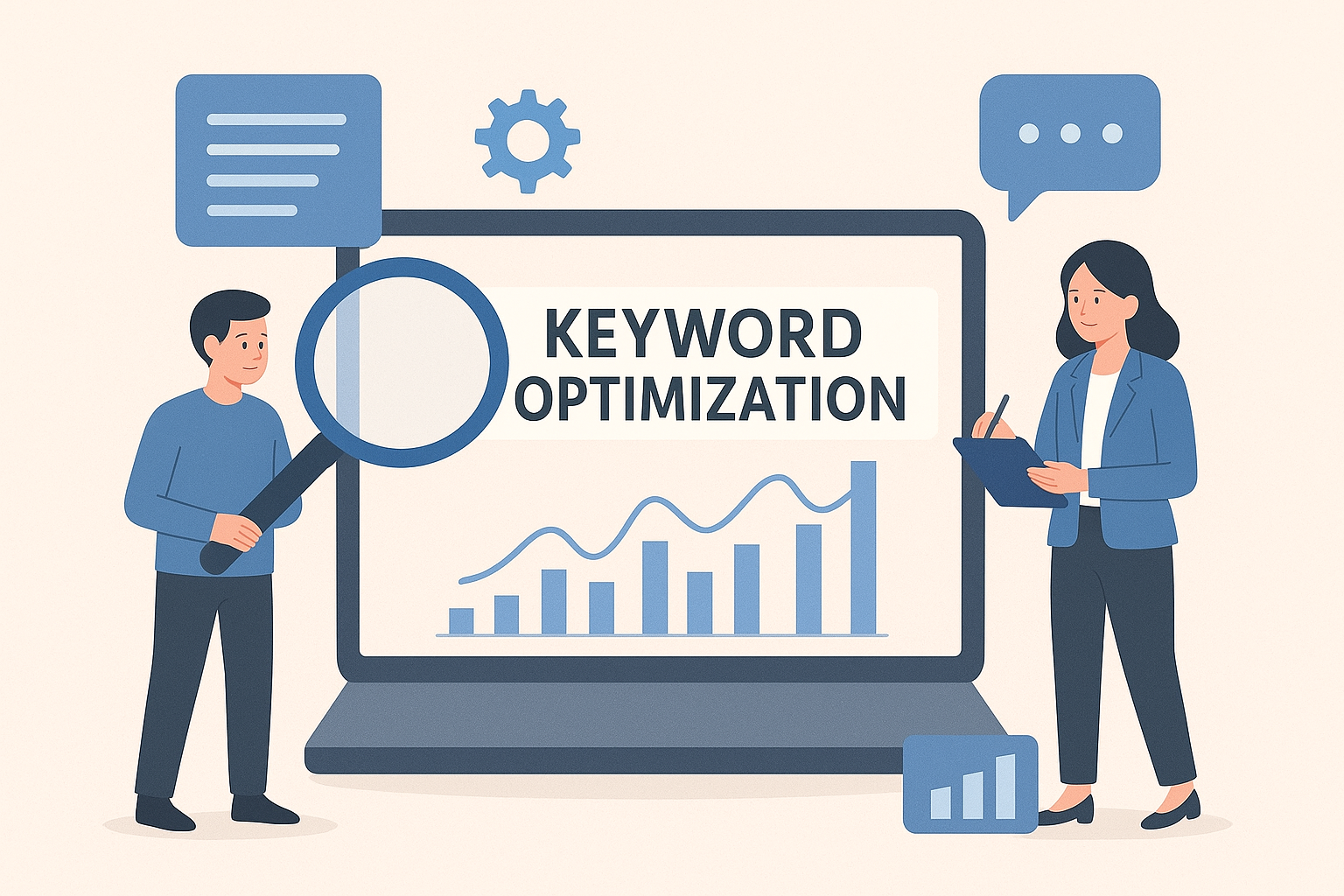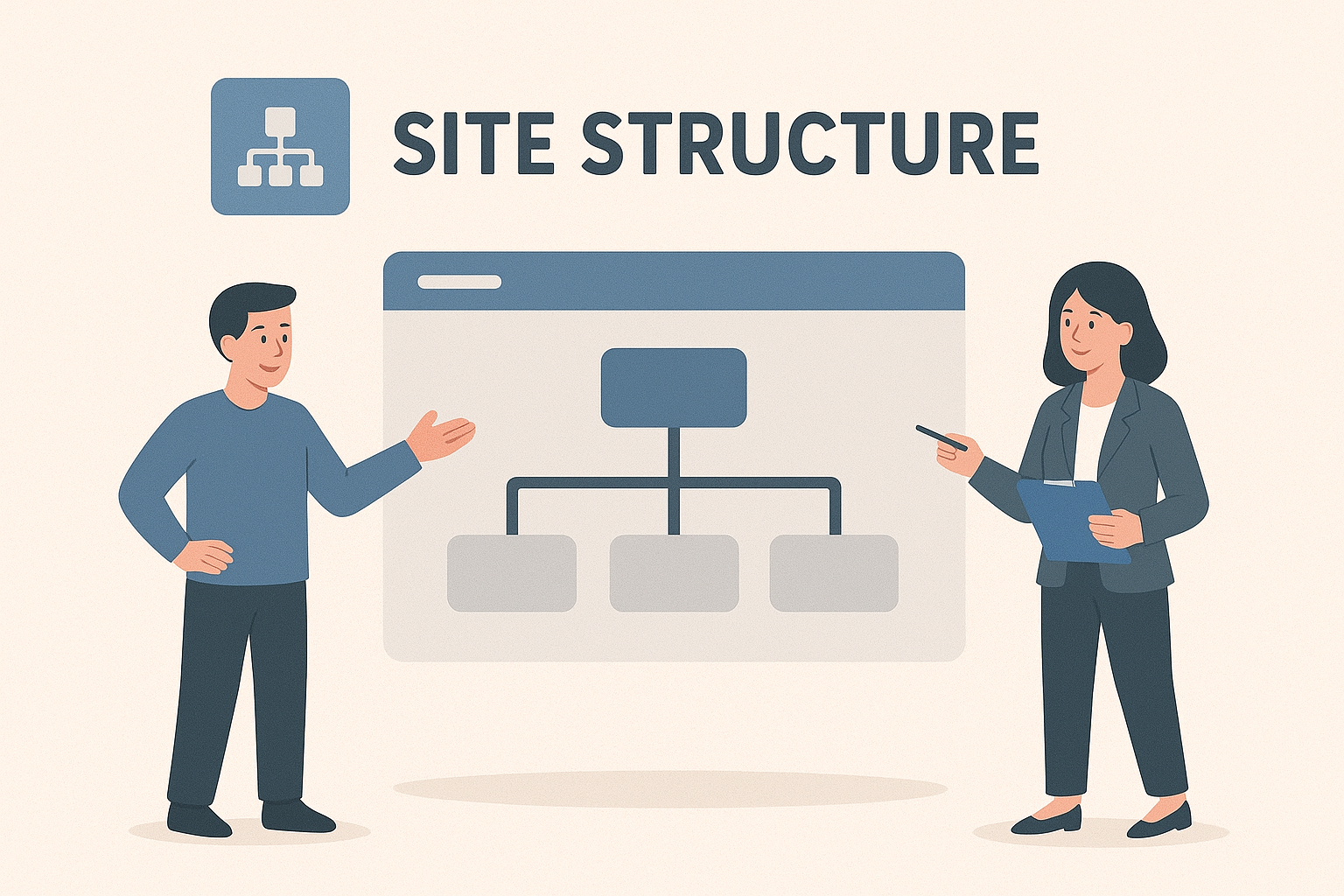A Beginner’s Guide to SEO for Bloggers
Do you ever feel like SEO is confusing and complicated? Do you wish you understood more about how it all works so you could grow your blog consistently? If you’re tired of spending hours on social media every week with little to show for it, then this guide is for you.
The good news is, you can stop relying on social media for growth. Search Engine Optimization (SEO) is the key to building a sustainable, long-term audience. It’s a powerful tool that has helped many bloggers, including myself, grow their platforms and even earn a six-figure income. The real magic of SEO is that the effort you put in today will continue to deliver results for years to come.
In fact, with SEO, a small amount of focused effort can yield much bigger and much more lasting results than a huge amount of effort on social media or even platforms like Pinterest.
The problem for many beginners is that there’s so much information out there, it’s hard to know where to begin. This guide will walk you through the most important aspects of SEO for bloggers, one step at a time.
But first, let’s start with the basics.

What Exactly is SEO?
Put simply, SEO is the practice of optimizing your website to achieve a high position in search engine results. But how do search engines like Google decide which pages to rank highest? To understand that, you must first understand how they work.
Essentially, search engines use bots to crawl the web, following links and indexing all the content they find. They then use a complex algorithm to decide which website is the best match for a specific search query.
How Do Search Engines Choose What to Rank?
Think of a search engine as a business. Their main goal is to keep their customers (the people searching) happy so they keep coming back. Therefore, their top priority is to provide the best possible result for every search query. The algorithm they use is designed to help them determine which website is genuinely the best answer to a particular question.
The Golden Rule of SEO
The key to succeeding with SEO is incredibly simple: BE THE BEST RESULT.
If your content is truly the best answer to a user’s query, you should, in theory, rank number one for it. Of course, being “the best” isn’t always as simple as it sounds. In the rest of this guide, we’ll explore exactly what that means and how to achieve it. This is a fundamental principle that will always hold true, no matter how search technology evolves.
SEO Is Not a Trick
There’s a common myth that SEO is some kind of trick or secret system that only big companies can master. The truth is, it’s not a trick at all. It’s about creating genuinely valuable content that your audience wants to read. The only “tricks” involved are learning to write truly excellent content and then learning to show search engines that your content really is the best. That’s exactly what you’ll learn in the following sections.
Ranking Factors for Search Engines
So, now that you understand the core principle of SEO, how do you actually “do” it? What are the specific factors that determine how well your post will perform in the search results against all the other websites competing for the same search term?
The key factors that will affect your content’s ranking are:
- Keyword research
- Keyword optimization
- Readability
- Site structure
- Backlinks
- Technical SEO
Let’s dive into each of these in detail.
1. Keyword Research
This is a critically important part of SEO that is often overlooked by new bloggers. Keyword research is all about understanding exactly what your audience is searching for.

What Are Keywords?
Your keyword is the search phrase you want a particular blog post to be found for. For example, if you’re writing a recipe for mushroom risotto, your main keyword might be “mushroom risotto.”
Two Big Mistakes with Keywords
Bloggers often make two major mistakes when choosing keywords:
- Choosing keywords people aren’t searching for. You might have written the best carrot risotto recipe in the world, but if no one is searching for “carrot risotto,” it won’t matter. You could rank number one, but no one will ever see it.
- Choosing keywords that are too competitive. Going back to our “mushroom risotto” example, this is a very popular search term. Consequently, there are a lot of recipes on the internet from much bigger, more well-known websites than yours. A quick look at the search results shows that this term is dominated by large players like supermarkets, the BBC, and famous chefs. As a new blogger, you likely won’t be able to compete with them.
Keyword research helps you find keywords that people are actually searching for, and that you have a realistic chance of ranking for.
How to Do Keyword Research
The first thing you need is a clear idea of your target audience. If you don’t know who you’re writing for, you won’t be able to do effective keyword research.
Once you know your audience, think about what they might be searching for. For example, if your readers are busy people who want to cook well but have very little time, they aren’t just looking for “mushroom risotto.” They’re probably looking for “quick mushroom risotto,” “easy mushroom risotto,” or “simple mushroom risotto.” Keyword research helps you narrow down which of these phrases has the highest number of searches with the lowest competition.
Free Tools for Keyword Research
You don’t need to spend a fortune on expensive tools. You can get started with these free resources:
- Your own blog statistics: Your existing data is one of the best tools you have. What are your most popular posts? What do your readers seem to need from you?
- Google Trends: This tool helps you quickly and easily compare similar search terms to see which is most popular. It also shows you related searches and trends over time.
- Google’s search results page: The search results page itself offers great insights. It shows you who your main competitors are, and you can also see related searches and common questions people have on that topic.
Keyword research is a big topic on its own. It’s the foundation of all your SEO efforts, so taking the time to do it properly is crucial.
2. Keyword Optimization
Once you’ve chosen your keyword (or more likely, a keyword phrase), you need to optimize your post for it. This means using that keyword in specific, important places to help search engines understand what your post is all about.

Where to Use Your Keywords
To properly optimize a blog post, you should use your keyword in the following key locations:
- Your Title: This is the most important place. Your keyword should be in your post’s title, ideally as close to the beginning as possible.
- Your First Paragraph: Use the keyword naturally in the first 100-150 words of your article. This confirms to search engines and readers that the post is relevant.
- Image Alt Descriptions: This is the text that describes an image for search engines and visually impaired users. Be sure to include your keyword in the alt descriptions of some of your photos or graphics.
- Throughout Your Text: Use your keyword a few times throughout the body of your text, but always in a natural way. Avoid “keyword stuffing,” which is the practice of unnaturally repeating your keyword. This can hurt your rankings.
- At Least One Subheading: Include your keyword in at least one of your subheadings (H2 or H3 tags).
- Your URL: It’s ideal to have a clean, concise URL that includes your keyword, such as
www.yoursite.com/your-keyword-phrase. - Your Meta Description: This is the short, two-sentence paragraph that appears under your title in Google’s search results. It’s an opportunity to convince people to click on your link.
Tools for Keyword Optimization
The main tool for keyword optimization is the Yoast SEO plugin for WordPress. You can type in your chosen keyword phrase, and Yoast will analyze your post and show you how to improve it. It uses a helpful color-coded system (red, orange, or green) to indicate how well you’re doing for each of the optimization criteria. It’s an indispensable tool for any blogger serious about SEO.
3. Readability
Readability is all about making sure your blog post is easy to read and that your readers can quickly find the information they are looking for. It’s a key part of providing a great user experience, which is a major ranking factor for search engines.
You might have great information in your post, but if it’s difficult to read or navigate, it’s not the best result for a searcher.

Key Aspects of Readability for SEO
A well-written and highly readable blog post should have:
- A Well-Structured Format: Your text should be logical and easy to follow. Use short paragraphs, bullet points, and plenty of headings (H2, H3, etc.) to help readers quickly scan and locate the information they need. As more people use mobile devices to browse the web, long paragraphs look like a “wall of text” that can scare readers away.
- Short, Easy-to-Read Sentences: This helps people understand your text more easily. Avoid complex sentences and, where possible, use the active voice over the passive voice.
- A Clear Goal in Mind: Before you write, know what the purpose of your post is. For example, is your goal to “create a comprehensive beginner’s guide to SEO”? Having a clear goal helps you decide what information to include and what to leave out, leading to a more focused and readable article.
Tools for Readability
Once again, the Yoast SEO plugin is your main tool here. In addition to keyword optimization, it provides a readability score. It will give you a red, orange, or green light based on criteria like sentence length, paragraph length, and subheading distribution, helping you improve your content’s scannability.
4. Site Structure
A strong site structure is crucial for SEO because it helps both your visitors and search engines navigate your site effectively.

User Experience
User experience (UX) is a huge part of SEO. Google wants to send its searchers to the best content, and one of the ways it determines if content is good is by seeing how users interact with your site.
In addition to providing great content in a readable format, a clear and easy-to-navigate site structure gives your readers a better experience. It helps them get where they want to go and understand what your site is all about.
Search Engines
A clear site structure also helps Google and other search engines crawl your site more efficiently. It helps them understand the hierarchy of your content, which are your most important pages, and it prevents your own articles from competing against each other in search results.
Elements of a Good Site Structure
There are many parts to a good site structure, but the main ones are:
- Tags and Categories: These help both readers and search engines understand what content is available and how it’s organized. Categories are the primary way to structure your content. You should aim for about 4 to 6 broad categories on your website, and all your content should fit into one of them. For example, a food blog might have categories like “Breakfast,” “Lunch,” “Dinner,” and “Desserts.” Ideally, all your main categories should be displayed in your menu bar so readers can see your topics at a glance. Tags are a way of linking content that is in different categories but has a common topic, such as all posts that mention “affiliate links.” Use tags sparingly and for the purpose of grouping related content.
- Internal Linking: Internal links are links from one page on your site to another. They are hugely important for both readers and search engines. Internal links help your readers discover related content and give them a place to go for additional information. They also help search engines better understand your site’s structure. Search bots see articles with many links pointing to them as more important than those with only a few. Every time you write a new post, you should link to other related posts and go back into old, related posts to link to your new article.
- Cornerstone Content: This is the most important content on your website—the pages or posts you want to rank highest for. Cornerstone articles should be long, comprehensive, evergreen, and extremely well-written. They should be the content you would most like a new visitor to read. You should have at least one piece of cornerstone content for each of your main categories. Most importantly, these cornerstone articles should have the most internal links pointing to them from other pages on your site.
Tools for Site Structure
The Yoast SEO plugin (free version) offers several tools for site structure. You can mark cornerstone content to get a stricter analysis, count the number of links to and from a post, and filter your post overview by cornerstone content or number of inbound links.
5. Backlinks
A backlink is when another website links to your content. Backlinks help search engines establish the “authority” of your website and each individual post or page.
If your website has a lot of backlinks from other websites that have authority themselves, it increases your “domain authority” in the eyes of search engines. Similarly, a specific page with many high-quality links pointing to it will have a high “page authority.”
The idea is that a site with a lot of good backlinks is more likely to have high-quality content than one with few or spammy links.

How to Get More Backlinks
There are many ways to get backlinks, but here are some of the easier, more effective ones:
- Share your content regularly on social media.
- Participate in blogger roundups or link parties.
- Contribute to articles written by brands.
- Create your own roundup posts that feature other bloggers.
- Guest post on other blogs in your niche.
- Keep an eye on hashtags like #journorequest on Twitter, where journalists look for sources.
Tactics to Avoid
Google wants backlinks to be “real” and genuinely useful for readers. Avoid unethical backlink-building tactics like paying for backlinks or participating in backlink exchanges. These can get you penalized by Google and cause you to lose your rankings.
6. Technical SEO
Technical SEO is a broad topic, but there are a few key areas that even beginners can address to help search engine bots crawl and index their sites efficiently. It’s all about making sure the “behind the scenes” elements of your site are working properly.

Crawlability
It’s important to make it easy for search engine bots to crawl your site. One of the best ways to do this is by generating an XML sitemap and submitting it to Google through your Google Search Console account. A sitemap is essentially a map of your website that tells search engines where all your important pages are. The Yoast SEO plugin can help you generate and manage this.
Fixing Broken Links
You should regularly check for broken links on your site and fix them. Broken links can frustrate users and signal to search engines that your site is not well-maintained. You can use a free tool like Broken Link Checker to find these links and then either fix them or remove them. Make it a habit to check for broken links at least once a month.
Site Speed
Site speed is becoming an increasingly important ranking factor. If your site is slow to load, it creates a poor user experience, which counts against you in search rankings. Search engines aim to give users the best possible answer, and a slow-loading site is never a great answer. You can improve your site speed by compressing images, using a good hosting provider, and minimizing unnecessary plugins.
Structured Data
Structured data is a piece of code that provides search engines with additional information about your post or page. Google uses this code to create rich results, which are search results that appear with extra information like star ratings, cook times, and images.
For example, when you search for “mushroom risotto,” you might see some results that include a photograph and a star rating. These are rich results, and they stand out in search results, making them more desirable. Google can only display rich results if you provide the structured data. This is especially important for recipe bloggers, as it is becoming very difficult to rank for recipes without providing this information. The good news is, a good recipe plugin like WP Recipe Maker can generate this structured data for you automatically.
Summary and Conclusion
Hopefully, this beginner’s guide has given you a solid grasp of the basics of SEO. While it might seem daunting at first, remember the most important principle: BE THE BEST RESULT. By applying these SEO strategies, you’re not just improving your blog’s visibility—you’re building a valuable online asset that can help you earn a living. You can learn more about monetizing your efforts with our articles on making $200 a day with ChatGPT and earning $100 per day online without investment.
Being the best result entails much more than just writing good information. It involves:
- Working out what your audience is actually searching for (Keyword Research).
- Creating great content that truly helps your audience.
- Optimizing your posts with your chosen keywords (Keyword Optimization).
- Making sure your text is well-structured and easy to read (Readability).
- Ensuring your website is easy for both readers and bots to navigate (Site Structure).
- Doing what you can to earn backlinks to your site.
- Using a tool like the Yoast plugin to help search bots crawl your site effectively.
- Improving your site’s speed and fixing broken links (Technical SEO).
- Using structured data where appropriate.
If you focus on these steps for every post you write, you will almost certainly see the results you’re looking for. You’ll no longer be an SEO beginner, and you’ll be well on your way to building a successful, sustainable blog. To manage your new income, consider exploring smart saving and financial planning.
Frequently Asked Questions
Why is SEO better than social media for blog growth?
SEO provides steady, sustainable, and long-lasting growth. Unlike social media, where a post’s reach is often temporary, SEO work can deliver consistent traffic and results for years after an article is published.
What are the most important SEO factors for a new blogger?
The most important factors are keyword research (finding what people are actually searching for), keyword optimization (using those keywords correctly), and creating high-quality, readable content that provides the best possible answer to a query.
Do I need expensive tools for keyword research?
No, you don’t. While paid tools are powerful, you can get started with free tools like Google Trends, Google’s own search results page, and your blog’s internal statistics.
How does site structure help SEO?
A clear site structure helps both human visitors and search engine bots navigate your website efficiently. It helps search engines understand the hierarchy of your content and which pages are most important, leading to better rankings.
Is it okay to pay for backlinks?
No, you should never pay for backlinks. Google wants backlinks to be “real” and genuinely useful for readers. Paying for links or engaging in link-exchange schemes can result in a penalty from Google, which will harm your search rankings.
For More Topics, Visit the Following Links
- Finding High-Paying, Low-Competition Keywords (2025)
- Top 10 AI Prompts for Content Writers
- Make $200 a Day with ChatGPT (2025)
- Earn $100 Per Day Online Without Investment (2025)
- Money Management: Smart Saving and Financial Planning
Helpful Outbound Links
- Ahrefs Blog for SEO insights
- Moz Blog for SEO tips and tutorials
- SEMrush Blog for digital marketing and SEO
- Yoast SEO Blog for WordPress users
- Google Search Console Help